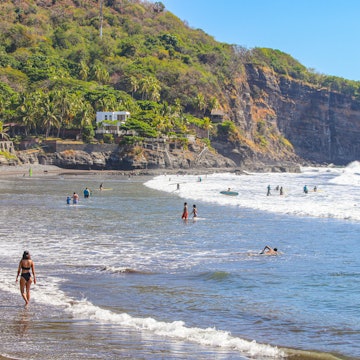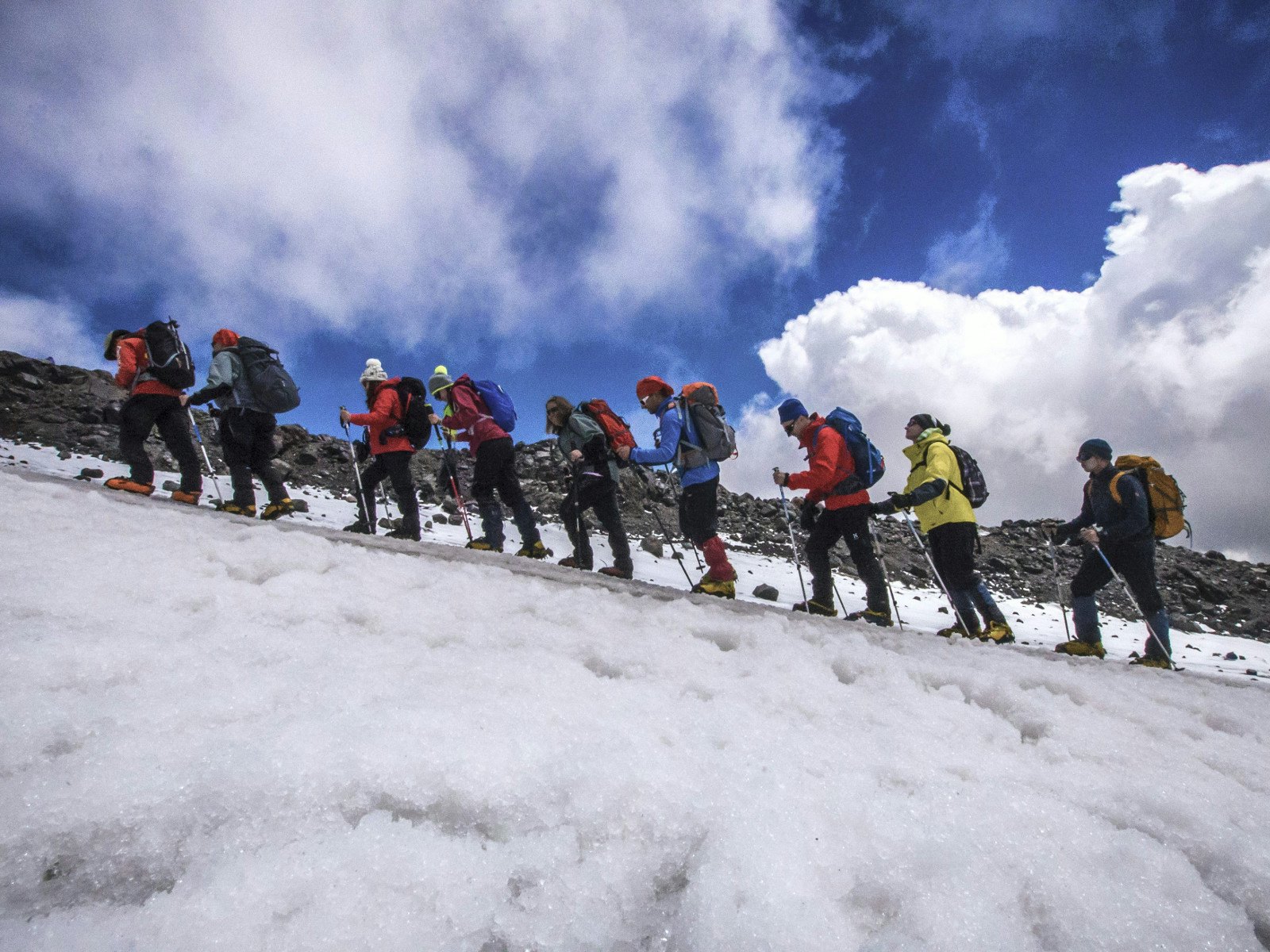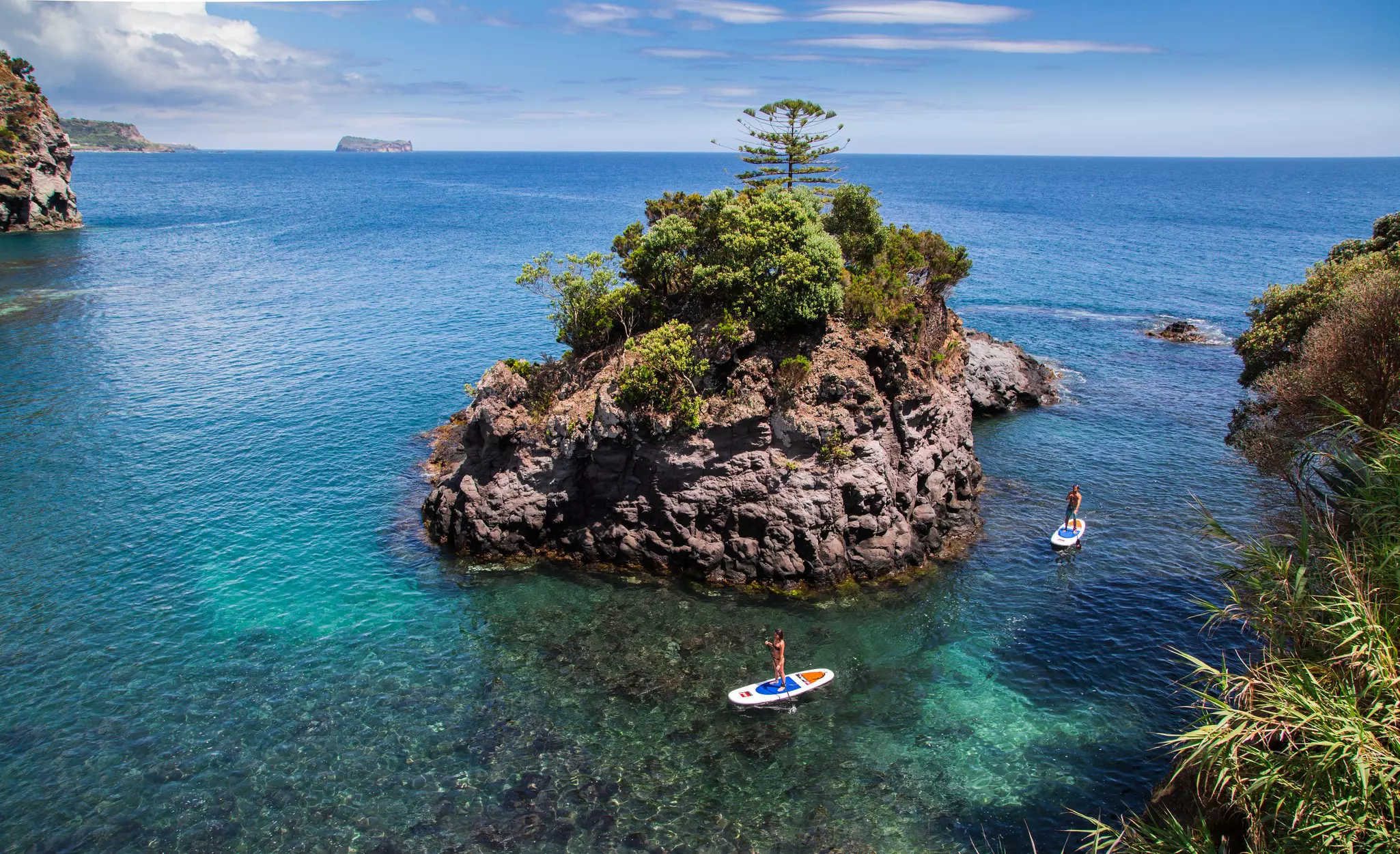
You want to climb Europe's highest peak? Here's how to summit Mount Elbrus
Nov 2, 2021 • 5 min read

The view across the Baksan Valley from an acclimatisation trek on Cheget Peak © Peter Watson / Lonely Planet
The line of figures in full winter gear snakes painfully slowly across the snowfield towards the summit. The climbers have been ascending for over 12 hours now. Lack of oxygen, deep cold and pure exhaustion is taking its toll, but in a few minutes, all this will be forgotten beneath the joy and adrenaline of summiting Mt Elbrus, the highest mountain in Europe. Magnificent views await on this great outdoor adventure – here’s how to find them.

Europe’s watchtower
When people think of mountaineering in Europe, they tend to think of the Alps, ski resorts and prettily perched mountain villages. Forget the French Alps though – it’s the Russian Caucasus that is home to Europe’s highest mountain, Elbrus.
At 5642m, Elbrus and its double-coned volcano is 832m higher than Western Europe’s highest mountain, Mont Blanc. It’s a certified member of the ‘seven summits’ – the highest point on every continent – and is coveted by mountaineers everywhere.
Despite its formidable stature, Europe’s highest peak can be climbed by most, but it doesn’t come without challenge or commitment.

What to expect
Terrain: Snowfields of blinding white ascend gradually, allowing climbers to see far and wide. The snow can be deep and soft or, in peak season, firm and crunchy underfoot. In one section, climbers must use fixed ropes. Here, the gradient is steeper with a vertiginous drop to the basin below. Guides will be on hand to help.
Weather: Like on all mountains, the weather on Elbrus can be harsh and unpredictable. It’s quite normal to start a climb sweating beneath clear skies and minutes later be pulling on protective clothing under lashing wind and snowfall. Already icy temperatures regularly drop to well below freezing, particularly at night.
Accommodation: Climbers usually spend the first two nights in a tourist-class hotel at Terskol village, where they will organize equipment and complete acclimatization treks. On the mountain, most climbers stay at a refuge, in simple huts located at 4000m. These are accessed by a series of cable cars and chairlifts or a day’s trek from Garabashi.
Altitude sickness: Everybody who climbs Elbrus will suffer some form of altitude sickness. On the summit, there is around 50% less oxygen than at sea level. Symptoms usually occur shortly after ascending above 2400m and include headaches, loss of appetite, shortness of breath, difficulty sleeping, nausea, vomiting and an increased heart rate. It is essential to take regular acclimatization treks, drink plenty of fluids and rest whenever possible.
Acclimatization: Climbers should take at least three acclimatization treks before their summit push: one from Terskol village up to 3000m on Cheget Peak and at least two more from the refuge on Elbrus, the first to Priyut 11 (at 4200m) and the second to Pashtuhova Rocks (at 4750m). A rest day should be included between the final acclimatization trek and summit day.
Summit day: Most climbers rise around midnight and depart by 1am for the most rewarding day of the trip. The first few hours are spent climbing in the dark using head torches. Ideally, climbers should reach the summit between 10am and midday before descending to the refuge by 3pm. Summit views are nothing short of magnificent. On a clear day, the peaks of the Caucasus stretch out as far as the eye can see. Even on an overcast day, summiteers will stand proudly above a serene sea of cloud.

Preparation
Training: There are no two ways about it: you need to be fit to climb Elbrus. The trekking is demanding, particularly on summit day when climbers can expect a 12- to 15-hour round trip. Training should include climbing conditioning, cardiovascular training and strength building. Climbers should be comfortable carrying a 12kg pack on long hikes ascending 1500m a day. A training program should include a mix of uphill hiking with a loaded pack, jogging and running, and weight training. This should begin at least eight weeks before your climb.
Skills: Ideally, climbers will have experience of winter hillwalking using mountaineering boots, crampons, a harness and an ice ax. However, if climbing with a guide, crash courses in all of this should be included in your itinerary.
Equipment: The most important items are warm winter clothing that can be easily layered for maximum insulation and waterproof Gore-Tex outerwear. Additionally, mountaineering-specific equipment such as a climbing harness, mountaineering boots and crampons, ice ax and ropes are all required. Guiding companies should supply clients with full lists upon booking. There are rental shops in the Elbrus region that can provide all essentials.

Practicalities
When to go: The climbing season on Elbrus runs from the end of April through to mid-September. The best time to climb Elbrus is July to August when the weather is more stable. If you prefer quieter slopes, climbing later or earlier in the season is possible, but the weather will be colder and less predictable.
Choosing a guide: Unless you’re an experienced mountaineer, it’s strongly recommended that you organize your climb through a guiding company. A standard eight-day program should include all accommodation, meals, internal transfers, guides and mountain passes.
International outfits will guarantee English-speaking guides and often help with formalities such as visas and international flights but will be far more expensive. The following are all widely regarded as reliable and experienced international guiding companies (prices range from US$2500 to as much US$6000 depending on what’s included):
If you go with a Russian-based outfit, you may be the only non-Russian climber in the team, although the guides will have at least a basic level of English. A Russian-based outfit will be cheaper and have better deals with local hire shops, but won’t include international flights. 7 Summits Club is a reliable Russian-based guiding company with prices starting from US$1360.
Flights and visas: Mineralnye Vody is the primary gateway to the Russian Caucasus. International flights to the airport usually connect in Moscow, Istanbul or Dubai. Most visitors to Russia need a visa. You should apply for the visa at least a month before the trip; more information can be found here.
You might also like:
8 magnificent mountains perfect for first-time climbers
10 best peaks for beginner mountaineers
8 of the world's most epic hikes












